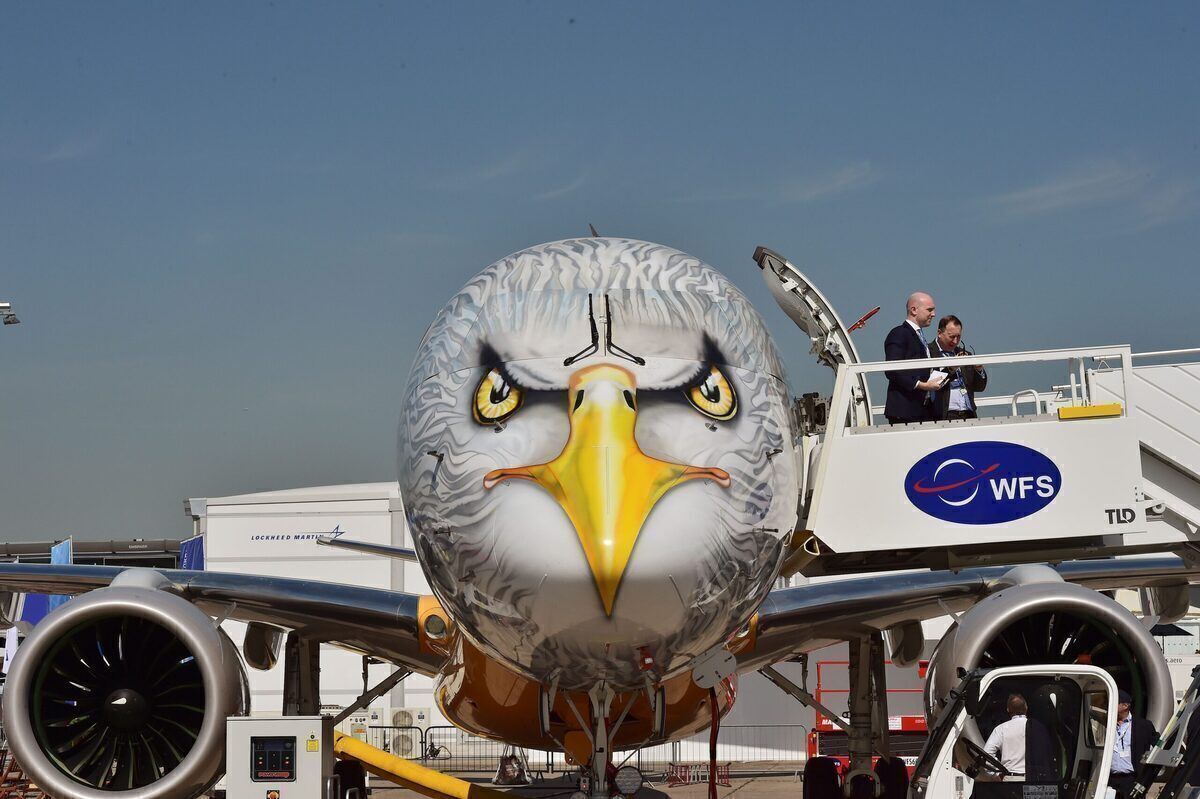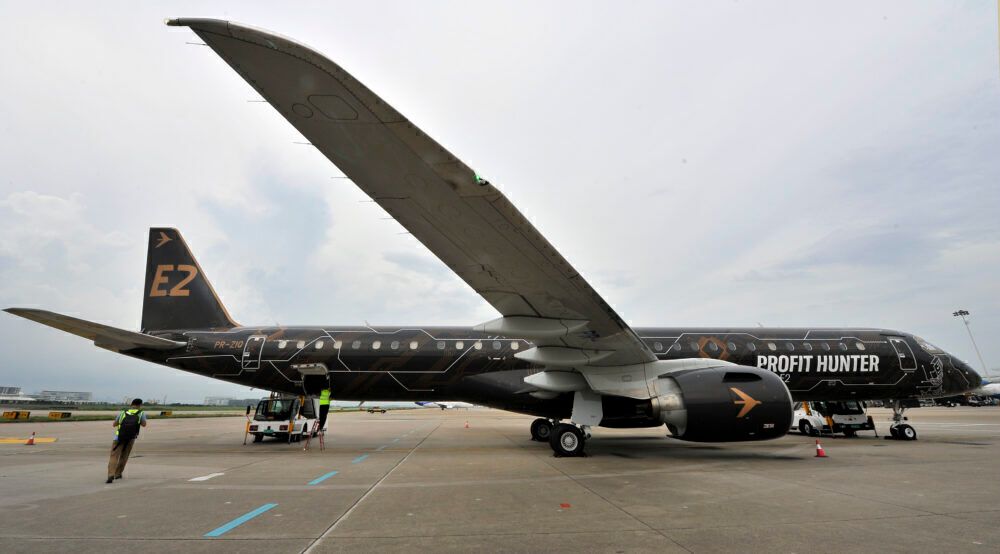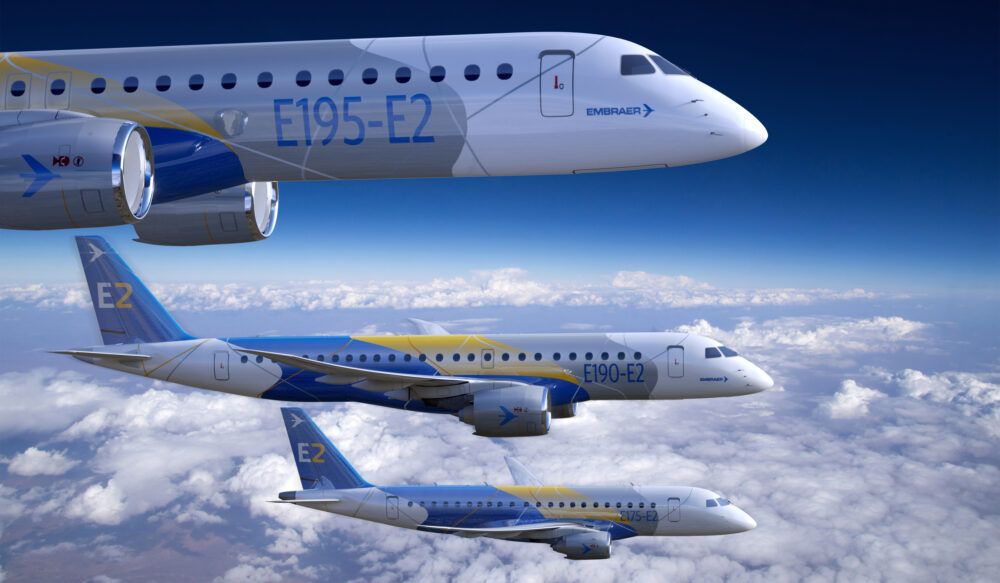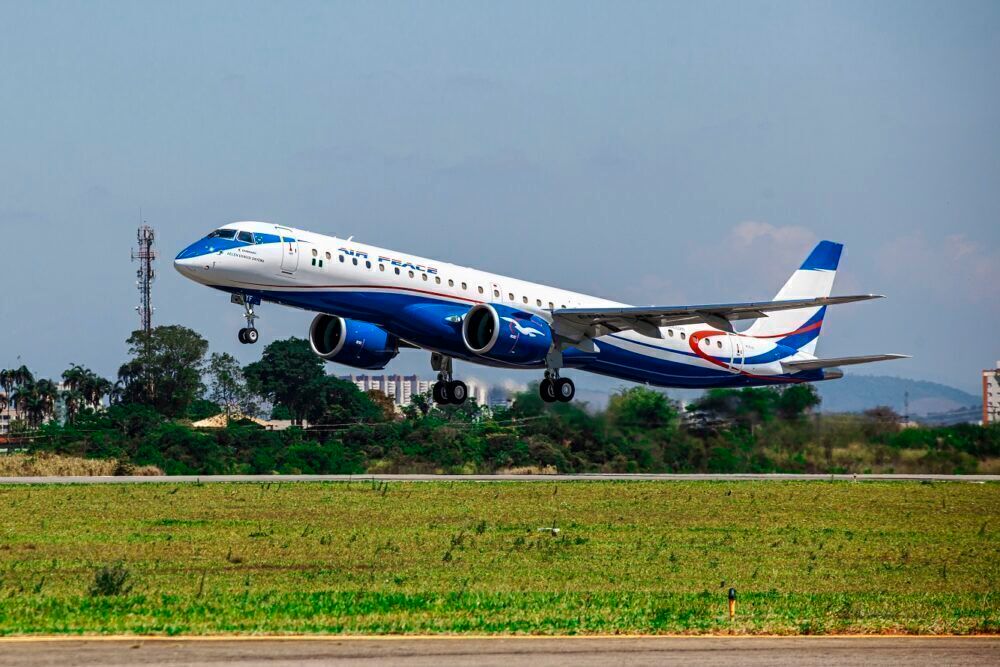When Embraer redesigned the E-Jet family, it wanted to create the very best regional jet it could possibly engineer. No stone was left unturned in its mission to make the E2s quieter and more efficient than any competitor. One key element to achieving that goal was a redesign of the wing, and a bespoke wing for every member of the E2 family.
A new wing
A whole lot changed in the process of evolving the popular E-Jets into the new E2 line of aircraft. With a focus on fuel efficiency and noise reduction, Embraer redesigned everything from the tail to the body and, of course, the wings.
Speaking exclusively to Simple Flying, Luis Carlos Affonso, Senior Vice President of Engineering, Technology and Corporate Strategy at Embraer, told us how crucial these new wings are to the success of the E2. He said,
“The E2 has a new wing with the biggest aspect ratio in the industry. It has the longest wings for this size of airplane. This means it is the most efficient wing; the one that that will produce the lowest drag, and drag is inefficiency and noise.”
For an Embraer fan, the new wing is relatively easy to spot. The enclosed slats and flaps help drive down inefficiency and noise, and the wingspan is visibly larger - 115 ft 2 in (35.124 m) on the E195-E2 compared to 94 ft 3in (28.72 m) on the E195. What’s not so easy to notice is that every member of the E2 family has its very own, bespoke wing.
A different wing for every aircraft
For most aircraft families, wings are standard across the aircraft type. The Airbus A320neo family, for example, uses the same wing across all aircraft types – the A319neo, the A320neo and the A321neo all have a wingspan of 117 ft 5 in (35.8 m). That’s the same wing used on the A320ceo too, with only the ‘Baby Bus’ A318 having a different, slightly smaller wingspan.
But for Embraer, it was important to design the most efficient wing for each member of the E2 family, and that meant a bespoke wing design for each different aircraft. Affonso explained,
“In the E2 family, we have three different wings. We have these bespoke wings for each size of aircraft. They are specifically designed for the aircraft and its weight, so it is the best weight you can get and the best fuel consumption you can get for that type.
“We had to invest more in the airplane, of course. We had to put in more engineering hours, do more wind tunnel tests and more flight tests, so there were more recurring costs for us. But we have very efficient, integrated product development teams and processes at Embraer, so we decided to do that.”
The Goldilocks zone
The reason Embraer decided to incur all these costs and extra hassles was because it wanted to create the very best product it could. Affonso explained the hazard that comes with not having the very best wing for the aircraft it is flying with, saying,
“If you go for one wing [across an aircraft family], you typically end up with an intermediate wing. It will be a bit too small for one airplane and a bit too big for another. We didn't want to compromise. We went for the optimum wing. This means we don't have more weight than is needed, and that makes our aircraft more efficient.”
This ‘Goldilocks zone’ mentality filters through to other elements of the E2 design. While the Embraer jets often take shade from the Airbus A220, due to the A220s superior range, Affonso said that the choice of not making the aircraft too rangy was a deliberate one.
“We don't have more range than is needed. These airplanes are not used for 3,000 plus nautical mile flights. If you try to get too much range, then you need a big engine, big wings. And then you pay the cost in weight and efficiency. So we’ve really tried to optimize for the market we want to serve.”
The E2 was designed for regional routes, not for medium-haul operations. While the A220 has found a niche in some longer, thinner routes, that’s not the market that the Embraer jets were designed to cater for. The end result is an aircraft that delivers better than expected efficiency, super quiet flight and a cost-effective solution for regional airline operators.




